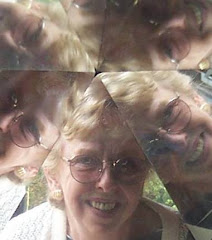 Historic Parry Lodge in Kanab, Utah was home to film crews and movie stars of the many westerns filmed locally from 1930s to 1970s.
Historic Parry Lodge in Kanab, Utah was home to film crews and movie stars of the many westerns filmed locally from 1930s to 1970s.
MORE THAN ONE REASON TO VISIT KANAB, UTAH
We just got back from a long and rushed trip to the Northwest. Tired though we were, we decided to stop off in Kanab, Utah since our only other trip through there had been even more rushed than this one.
Kanab is a small town in Southern Utah just above the Arizona border and Lake Powell, and has to be situated in one of the most spectacular spots in the world. This is the setting for many a western film from the 1930s to the 1970s, most of them filmed after color was introduced. And who could blame Hollywood for picking such an area for filming. First of all, it was remote and mostly unsettled, making the movie more realistic and easier to shoot, and next, the technicolor canyons gave film viewers amazing scenery as a backdrop for the westerns. How could they have better showcased the new technology of Technicolor?
The main reason we wanted to stop there was to visit Best Friends® Animal Sanctuary, www.bestfriends.org/, a wonderful place that rescues abused and abandoned animals. They take in all companion animals, including pigs, horses, rabbits, and of course dogs and cats, that would be turned down by any other rescue organization because they’re too old, too sick, or too abused or not socialized. Then they have a dedicated staff of professional veterinarians, trainers, etc. in addition to compassionate volunteers who try to salvage the desperate, hopeless and helpless animals who land on their doorstep.
Best Friends was on the Gulf Coast following Hurricane Katrina attempting to save animals that had been left behind during the storm, attempting to feed, provide medical care, and reuniting those that they could with their mostly distraught owners through a website they set up and manned. They took in Michael Vick’s dogs that had been abused and tortured, and tried to socialize and train those that were salvageable so that they could find a loving, forever home with a family of their own. They continually get calls to come rescue dogs from horrible conditions, such as in large, wholesale breeding situations that must live in their own waste while crammed in tiny crates. And they have often rescued cats and dogs from terrible hoarding situations. Sometimes, they find dozens to hundreds of dogs and cats that have had little to no care or attention, even though the hoarder might have started out with good intentions.
Some of you may have seen the TV show, “Dogtown,” on National Geographic channel, which showcases the work of Best Friends with dogs. It only runs intermittently and isn’t on the air right now, but hopefully, it will be back later this summer or fall.
Anyway, we are unabashed animal lovers, and we wanted to visit this little bit of heaven on earth for animals, if only for a short time. The setting is in Angel Canyon five miles north of Kanab, a truly magnificent place. Besides the animal care and training facilities, the sanctuary also has cabins for guests that can be rented overnight as well as two RV sites.
We stayed overnight in town at the historic Parry Lodge. What a pleasant surprise to roll into town tired and dusty to find a little bit of the South in a Colonial style building surrounded by huge shade trees and low bungalow buildings that held the rooms. The Lodge had been established as a home to film crews and stars that came there in the thirties to make movies after the owners had started as a transportation service for a film crew on their first film assignment in the area. The owners built a place for them to stay, and then headed to Hollywood to encourage other production companies to come there.
We stayed in the Ray Milland cottage. A lot of the cottages are named for stars that bunked in them back in the day. I remember Milland’s name, but I’m not sure I ever saw him in a film. Still, it was a beautiful place to stay and had all the usual amenities, even though it is not as modern as new Inns. Many of the famous who stayed there autographed photos for the owners, which hang throughout the main building.
We discovered that the last weekend in August is “Legends of the West” weekend, when many of the older Western stars or their offspring come to town. This would definitely be an event that we would enjoy attending, although everything seems to be booked up far in advance, leaving us unable to plan a visit this time.
The other amazing thing about the Kanab area is the number of National Parks and Monuments located within a short drive, including Lake Mead. I doubt that many of us, as children, ever learned anything about this region, other than what we saw on the screen. I certainly couldn’t have told you where it was located, or the history behind the people who lived there, including the Native Americans who called this area home.
I intend to watch one of my favorite movies, The Electric Horseman, again and make notes about places mentioned in it so the next time we go up, we can try to follow the route taken by Robert Redford as he led the beautiful, exploited horse to freedom. I can remember that the route taken was so spectacular, and as soon as I saw it, I knew it was a place I had to visit one day. Assuming it wasn’t a painted backdrop, I’m sure we’ll find its rare and unspoiled scenery somewhere near Kanab, Utah.

